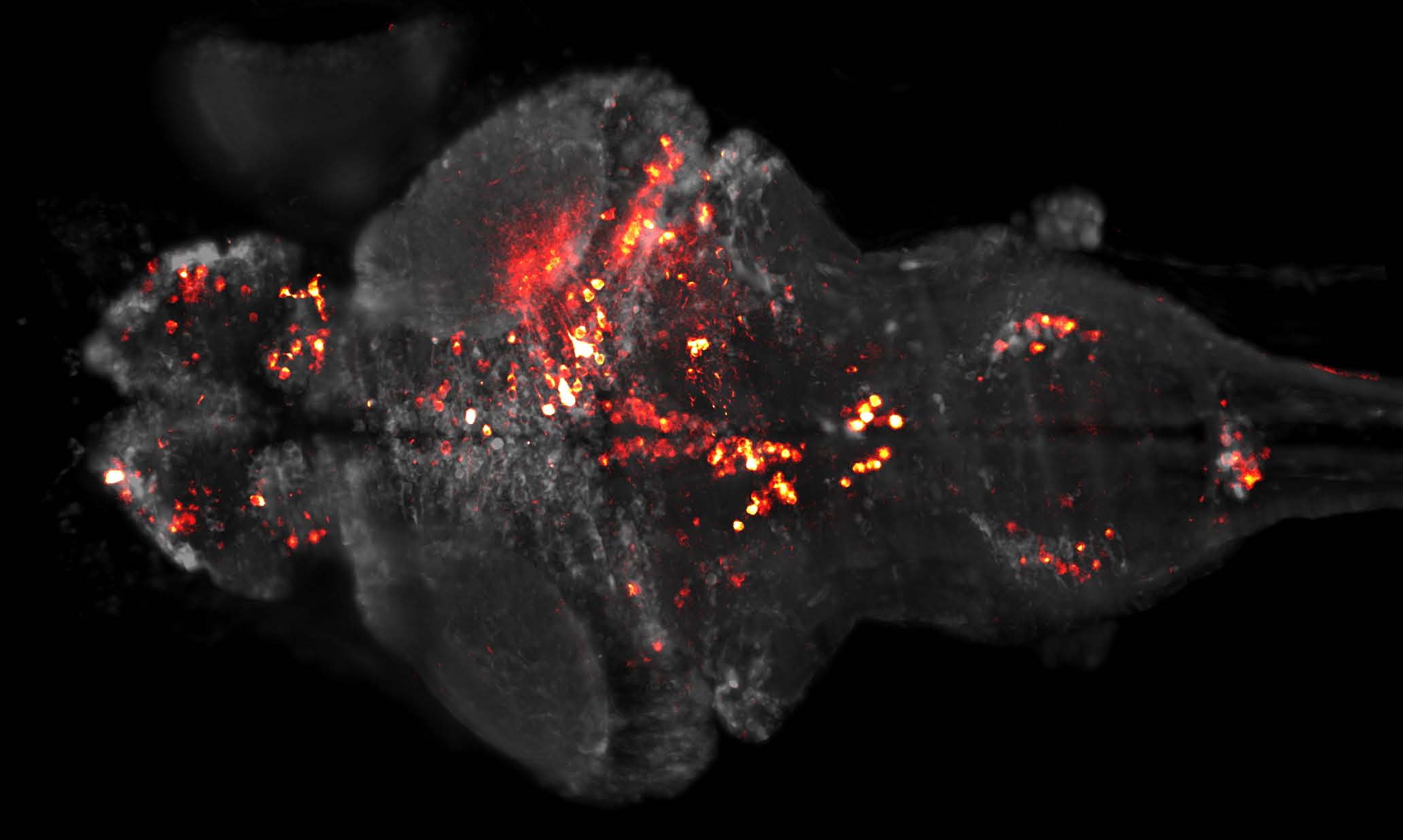A Near-Whole Brain Activity Map in Fish
Image: Neurons glow red as they fire in this whole zebrafish larva brain. Credit: Misha Ahrens and Philipp Keller

Researchers have for the first time been able to image most of an entire vertebrate brain at the level of single cells, reports Nature.
A study from the Howard Hughes Medical Institute’s Janelia Farm Research Campus, published in Nature Methods on Monday, shows that modifications to existing microscopy techniques enable researchers to take snap shots of neuron-by-neuron activity in the whole brain of a living zebrafish larvae. The zebrafish larvae, whose bodies are transparent and brains are tiny, were genetically engineered to produce a protein in their neurons that glows in response to the chemical changes that occur when that neuron fires.
With conventional techniques, capturing the activity of even 2,000 neurons at once is difficult. With the modified fish and microscopy methods, the researchers were able to capture the activity of at least 80 percent of the baby fish’s 100,000 neurons over a time period of just 1.3 seconds.
The result is an encouraging announcement for proponents of the Brain Activity Map project, a still-developing scientific collaboration to establish new technologies that can record the activity of all individual neurons in a brain circuit simultaneously (see “The Brain Activity Map”). According to Nature News, Rafael Yuste, a neurobiologist at Columbia University in New York and leader of the Brain Activity Map project, thinks the zebrafish results are “phenomenal.”
“It is a bright star now in the literature, suggesting that it is not crazy to map every neuron in the brain of an animal,” [says Yuste].
Keep Reading
Most Popular
Large language models can do jaw-dropping things. But nobody knows exactly why.
And that's a problem. Figuring it out is one of the biggest scientific puzzles of our time and a crucial step towards controlling more powerful future models.
How scientists traced a mysterious covid case back to six toilets
When wastewater surveillance turns into a hunt for a single infected individual, the ethics get tricky.
The problem with plug-in hybrids? Their drivers.
Plug-in hybrids are often sold as a transition to EVs, but new data from Europe shows we’re still underestimating the emissions they produce.
Stay connected
Get the latest updates from
MIT Technology Review
Discover special offers, top stories, upcoming events, and more.